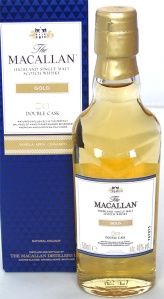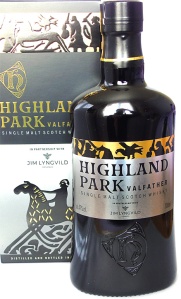Don’t you just hate it when you find a post on the Internet that you enjoy but as you’re about to write a comment you realise the blog hasn’t been active for years! There’s no explanation as to where the creator has gone, nor what killed their interest in the subject they felt worthy enough to write a website about. Well that’s what has happened to my beloved Whisky Den (sorry!). Life moves on, interests change, and in the case of my whisky collection, I’ve recently sold most of it at auction (nearly 500 bottles). But rather than leave Whisky Den hanging I thought I’d come in with this final post about whisky as an investment; what did well, and what didn’t.
If you’re reading this post because you’re interested in whisky as an investment and you’re on a small budget I have one word for you – Macallan. You might think you need a large budget for Macallan but I found that all the entry-level bottles I bought over 8 years of collecting ended up making a profit. Here’s a few examples:
- Macallan Gold – bought for £35.50, sold for £170
- Macallan Speymalt 2004 – bought for £25.80, sold for £110
- Macallan 12yo Sherry Oak 5cl – bought for £5.40, sold for £40
- Macallan Sienna – bought for £66, sold for £260
- Macallan 12yo Fine Oak Ernie Button – bought for £55, sold for £170
So if I was collecting whisky today I’d certainly acquire bottles of the latest ‘budget’ Macallan (currently the 12 year olds) to squirrel away at the back of a cupboard. As soon as their packaging gets revamped or they get discontinued the prices at auction start to creep up. Or at least that’s been the case in recent years. As for more expensive Macallans (£200+), my rule of thumb is to look for an age statement/date, or failing that a numbering system as part of a set such as the Concept or Folio series. But even if you buy an expensive NAS (non-age statement) without an obvious date or number, and you notice its value isn’t increasing, it’s Macallan so it will get there eventually, even if you have to hold onto it for 20 years, or pass it on in your will.
Just in case you think this post is all about ‘look how much money I made!’ let’s take a glance at the failures. Of the 442 lots I sold at auction 160 of them made a loss. This might seem like a bad miscalculation on my part but most of my collection wasn’t bought as an investment so I had some real clunkers in there that wouldn’t make a profit if I kept them for another 20 years. What can I say, I needed the space! Some disasters include:
- 1770 Single Malt (1st release), bought for £100, sold for £40
- Reisetbauer 12yo (Austria), bought for £84, sold for £35
- Kininvie 17yo Batch 1, bought for £70, sold for £45
- Glenesk 5yo (1970s), bought for £120, sold for £55
- Haig Club Single Grain, bought for £41, sold for £25
- Hazelwood 18yo (blend), bought for £66, sold for £35
And on, and on. The lesson I learnt from the Glenesk 5yo was not to buy anything with a screw cap if I don’t want the liquid to evaporate. Single grains and blends rarely make money and certain distilleries are best avoided as investments such as Glenturret, Kininvie, Tullibardine, Glen Spey, Tamnavulin, Glen Moray, Ardmore, Speyburn, Speyside, Cardhu, Inchgower, and quite a few more in my experience.
Let’s get back to a more positive note and the top five best performers in terms of their percentage increase:
- Spirit of the Highlands 1966 49yo (Ben Nevis, 29.5%), bought for £33.20, sold for £290
- Macallan ‘Classic Cut’ 2017 (first release), bought for £86, sold for £700
- Highland Park 21yo 5cl miniature, bought for £8, sold for £70
- Springbank 12yo Cask Strength (batch 6), bought for £42, sold for £320
- Hibiki 12yo 50cl (Japanese blend), bought for £37, sold for £270
The ‘Spirit of the Highlands’ is a bit of a weird outlier because it’s not legally whisky at 29.5%. The independent bottler, Whiskybroker, acquired an old cask of Ben Nevis and in 2015 decided to bottle it up and sell it off as a 50cl and 5cl set for only £25 and £8.20 postage. I wish I’d bought more than one because within a few years bottles were selling at auction for about £900. Things have settled down now but getting £290 (£220 for the 50cl and £70 for the 5cl) is still a fantastic return. Sadly Whiskybroker is the only bottler I’ve ever seen doing this with an ancient, sub-40% cask.
The remaining four bottles on my ‘best performers’ list are a good example of whisky that’s done well in recent years, perhaps with the exception of the Highland Park (HP). Macallan, Springbank and Japanese whisky have been very popular but a lot of HP bottles have struggled at auction, which I can only assume is due to the owners flooding the market with lots of NAS bottles. Nevertheless, drinkers, collectors and investors still recognise quality so the classic HP bottles, such as the 21yo, do reasonably well.
On my list of best performers, you have to go down as far as 51st place before finding the first full size bottle from a closed distillery, a Rosebank 24yo from 1990. Closed distilleries are almost guaranteed a return as an investment but more of a long-term thing. You also have to fork out a lot more for them in the first place. My Rosebank cost £250 then 6.5 years later sold for £700. I got a better return on miniatures from closed distilleries but, like the Glenesk I mentioned earlier, minis have screw caps, which are more likely to result in evaporation, so keeping them for years and years is risky.
Time to finish on a high with the top five bottles making the biggest profit at auction (less auction fees). It should come as no surprise that they’re all Macallan:
- Macallan, The Archival Series, Folio 6 – £1,533 profit
- Macallan ‘Classic Cut’ 2017 – £608 profit
- Macallan 18yo 1995 – £549 profit
- Macallan 18yo 2016 – £499 profit
- Macallan Concept One – £494 profit
If I have one regret about the list above it’s that I never got to taste a Macallan 18yo. But when bottles are selling for £700, I’m sure I would have been underwhelmed considering its monetary value. But that was always the difficulty about owning something designed to be drunk when also being aware of the increasing demand and value. It’s difficult to separate the two.
In summary I would say that getting into whisky has been a lot of fun. My pallet has improved and it’s been very educational in many ways. I quickly achieved my original goal of owning an example from every active distillery in Scotland but in hindsight, 100+ bottles, usually 70cl in size, quickly meant I had more whisky than I’d drink in a lifetime. And that’s when it becomes more of a collection and ultimately an investment (thanks to a boom period in the industry). I certainly ‘got out’ at a good time but who knows how long before the next crash. If there’s one thing 200+ years of whisky history has taught us is that with every peak a trough will come eventually. Let’s hope it’s not for a long time yet!

















































































































































































































































































































































































































































































































































































































































































































































